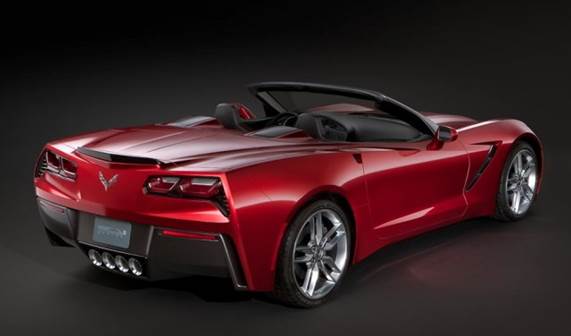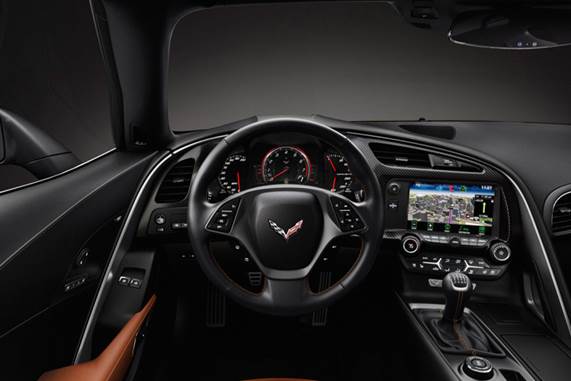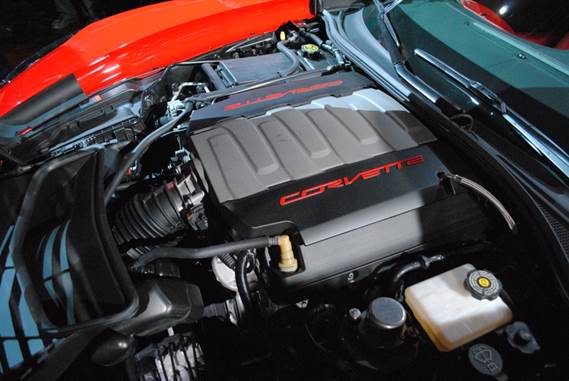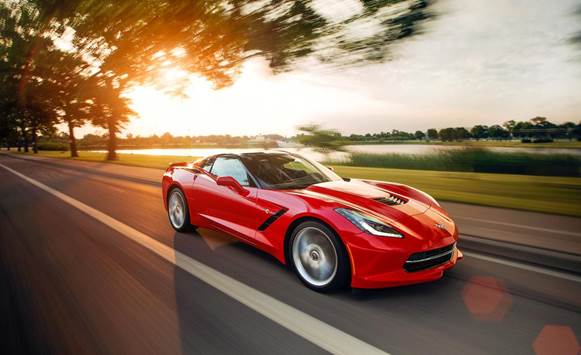We drive the brand-new Chevrolet Corvette Stingray to find out whether the beast has been tamed
Corvettes have always been adept track stars. Maintaining a close relationship with a successful racing team assures that. But they’ve also been white-knuckle beasts that, instead of eliciting relaxed smiles or slow sighs of ecstasy, only developed pants and palpitations.
Well, the time has come to see if the C7 generation has put all that right – to find out if the beast has been tamed, and if so, whether said taming has neutered the lovable aspects of the beastliest C6s. In short, can it still lay down hero numbers without soiling the hero’s pants?

Our first answers lie on the “black lake” at GM’s Milford Proving Ground west of Detroit, but before chief engineer Tadge Juechter will turn us loose to start measuring numbers, he’s got a PowerPoint presentation for us.
While the motoring scribes fidget, knees bouncing, the slides reveal new factoids such as the engine output ratings: 339 kW at 5 900 r/min and 624 N.m at 4 700 r/min for the base engine; 343 kW/630 N.m (at the same revs) with the Dual-Mode Performance Exhaust fitted. This system more or less bypasses the rear mufflers with a pair of exhaust butterflies. Juechter also discloses that, when operating as a 3,1-litre V4, the LT1 produces 93 kW and 300 N.m at 3 000 r/min – that’s 10 times the power needed to : maintain 80 km/h, and it’s sufficient to sustain 145 km/h on flat ground (I checked).
Let’s fast-forward to the black lake. I warm up the car with numerous laps of the figure-eight course, trying different modes. Everything off proved too hard to control, but track mode with the dry program seemed to allow the ideal slip angle. The new Michelin Pilot Super Sport ZP tires are supposedly quite a bit stickier, hence lateral g increases to 1,11 g from 1,09; our lap time of 23,9 seconds at 0,82 g was 0,2 second off the old Grand Sport’s; and our 96-0 km/h braking distance stretched from 30,8 to 32,6 meters.
With all gauges and tires showing “warm”, I line up for eight acceleration runs: four with launch control (traction off, clutch in, floor the throttle, let revs stabilize, release Dutch and let computer modulate) and four without. The computer launches at 4 000 r/min, and each run registers within a 10th of a second – great for bracket racing, but I know she’ll bite harder with fewer revs.
Sure enough, with about 2 800 r/min, careful modulation and earlier hook-up, I’m better than a 10th quicker, with my best two-way average working out to 3,9 seconds to 96 km/h and 12,2 at 188,8 km/h after 400 meters. The seven-speed ‘box affords easy snap shifts, with only one missed shift in eight runs, although as a mechanism it’s nowhere near as delightful to snick around as a 911′s.

With hard numbers in hand, I strap in for a demo of the continuously variable-locking differential. Maintaining 96 km/h, I jerk the wheel 30 degrees right. With the diff open, the car slews into a dramatic tank-slapper; when fully locked, the car tracks through perfectly. For any given combination of throttle, brake, steering and tire temperature, this new eDiff can serve up precisely the percentage of lock required to produce the desired slip angle, as indicated by the drive mode and whichever Performance Traction Management program is selected.
To showcase the bandwidth of these selections, I take a dozen laps of an autocross course in a new Z51 outfitted with the magnetic ride-control package. From the Drive Select knob’s track mode, I press the traction control button twice, opening the PTM menu and progress up through the dry, sport 1 and 2, and race sub-selections (there’s also a wet mode). Each twist of the dial makes it easier to point the nose with the throttle, and in some of these tight turns, this helps a lot.
It strikes me that the electronics are serving as a quasi-stand-in for a pit crew swapping out antiroll bars and damper settings, and “wedging” the suspension to tailor the car for the conditions of a particular track. You can also program new combinations, such as track mode’s heavier steering effort in touring mode. Cool.

Our last stop is the big Milford Race Course, aka Lutzring. Here, the turns are much bigger and faster, and all hills and dips are designed to upset the chassis. Once again, I start off in track mode, toggling through the PTM programs and taking full advantage of the rev-match system. (It can be toggled on and off via either steering wheel paddle, and the gear indicator on the dash glows orange when it’s engaged.)
